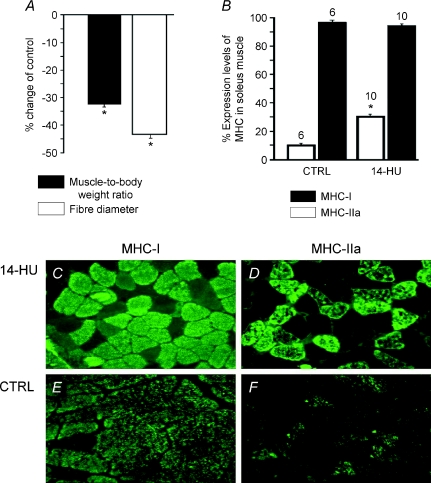Figure 2. Percentage changes in myosin heavy chain (MHC) expression levels, fibre diameters and muscle-to-body weight ratio of slow-twitch soleus (SOL) muscle from 14-day-hindlimb-unloaded (14-HU) rats.
A, the mean muscle-to-body weight ratio was calculated for 14-HU rats (n= 10 rats) and normalized with respect to that of control rats (n= 6 rats). The body weights of the 14-HU rats and controls were 355 ± 30 g and 385 ± 30 g, respectively, at the end of the unloading period. The change to fibre diameter was calculated (n= 90 fibres) for the 14-HU rats and normalized with respect to that of control rats (n= 110 fibres). Disuse leads to a significant reduction of the muscle-to-body weight ratio and of fibre diameter. The muscles were rapidly excised from the bones of anaesthetized rats and carefully dried before weighing. B, percentage MHC isoform expression levels were evaluated on muscles from 14-HU and control (CTRL) rats. C, D, E and F, immunofluorescence staining for specific MHC isoforms expressed in SOL muscle sections from 14-HU rats and controls. Disuse leads to a significant increase in the expression levels of the fast type IIa MHC isoform; while no changes were observed in the expression levels of the slow type I MHC isoform. The numbers above the columns indicate the number of sampled muscles/rats. *Significant differences between data are evaluated by an unpaired Student's t test for P < 0.05 or less.

